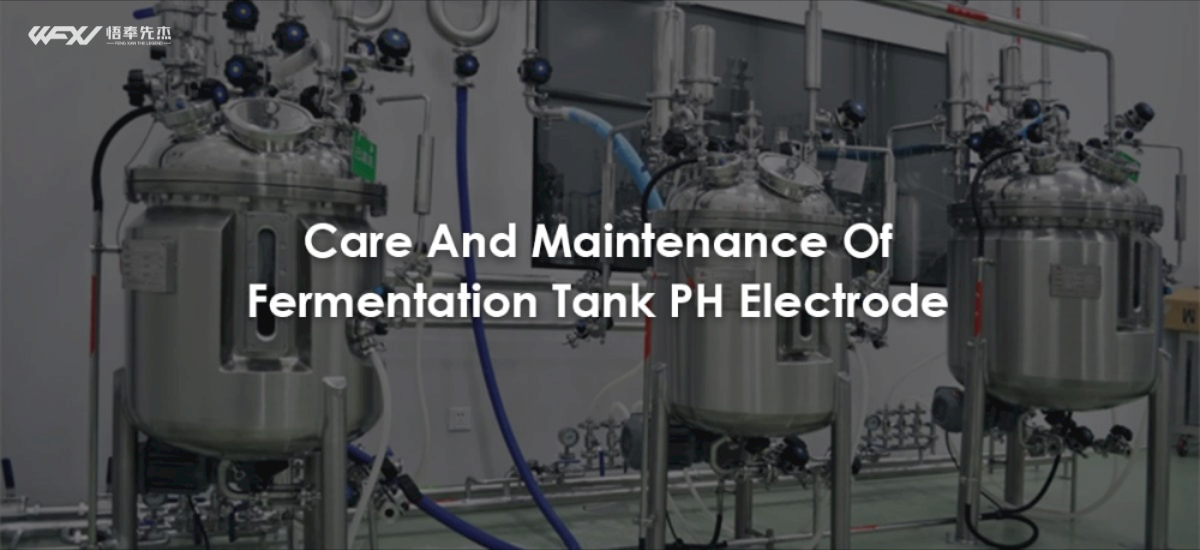
As the market scale in the field of biological fermentation continues to expand, fermentation tanks are widely used in bioengineering, pharmaceutical and other fields. Fermentation tank manufacturing technology has also progressed day by day, entering the stage of automation development, meeting various fermentation needs and improving fermentation quality.
一. Preparation before using the fermentation tank
1.Please check the packaging for damage before unpacking the fermentor. If the outer packaging of the fermentation tank is damaged, please do not continue to open the packaging and contact the transportation department and the company immediately. After the transportation representative arrives, they will jointly open the packaging and check whether the electrode is damaged. It is recommended to take photos.
2. If the outer packaging is intact but the electrode is damaged, please contact the company immediately. And send the electrodes together with the warranty card, instructions and original packaging back to the company.
3. Please read the electrode instruction manual carefully before using the fermentation tank. If the diaphragm of the electrode is covered with silica gel, use the knife provided with the electrode to carefully scrape off the silica gel before use. The direction should be from front to back to avoid scratching the sensitive membrane. Note that all silicone on the diaphragm should be scraped off (until the tip of the knife touches the porous ceramic on the diaphragm).
4. Observe whether there is liquid in the pH electrode sensitive membrane bulb. If it is not filled with liquid or there are bubbles, gently shake the electrode to make the bulb filled with liquid and without bubbles.
5. Before use, the electrode can be soaked in an acidic buffer (pH 4.00) for a few minutes, and then soaked in a neutral buffer (pH 6.86 or 7.00, etc.) for a few minutes. Then start calibration again.
二.Things to note when calibrating electrodes
1. Please use fresh buffer when calibrating. If the buffer becomes ineffective after fading, it cannot be used. If you use the NIST series (user-prepared national standard series) buffer, it is recommended to use it within one week after preparation.
2. Leave the electrode in the buffer for 1 minute before proceeding with subsequent operations.
3. Pay attention to selecting the correct buffer series in the transmitter.
4. After rinsing the electrode, only use soft paper towels to absorb the moisture, and do not rub the pH-sensitive membrane.
5. The calibration cycle of the fermentation tank PH electrode is determined according to different use environments and accuracy requirements. The appropriate calibration cycle must be determined while ensuring accuracy.
三. Routine maintenance of pH electrode
1. General pollution: Clean the electrode with water, 0.1mol/lNaOH or 0.1mol/lHCl for several minutes.
2. Grease or organic matter pollution: Clean the electrode with acetone or ethanol for a few seconds.
3. Sulfide contamination (diaphragm turns black): Treat with 9892 cleaning fluid (see instructions for use attached in 5).
4. Protein contamination (diaphragm turns yellow): Treat with 9891 cleaning solution (see instructions for use attached in 5).
5. Electrode regeneration: Treat with 9895 regeneration solution (see instructions for use attached in 5). Regeneration can only extend the life of the electrode to a limited extent.
6. Sheath pressure maintenance: When using electrodes that require pressurization, you should always observe the pressure gauge reading on the sheath. In principle, the pressure inside the sheath should be more than 1.5 Bar higher than the pressure inside the reactor.
7. When the measured medium is contaminated with sulfide or protein on the electrode, it should be dealt with in time.
四. Storage of pH electrodes
1. When the PH electrode of the fermentation tank is not used for a long time, it should be stored in a suitable liquid according to the instructions.
2. The fermentation tank electrode cannot be left dry for a long time, and the electrode cannot be stored with dry medium attached to the surface. Dry electrodes should be activated in a suitable preservation solution before use.
3. Fermentation tank electrodes cannot be stored in distilled water.
五. Instructions for use of electrode treatment solution
1. Electrode cleaning solution (9891)
Gastrin/HCl is used to remove protein contamination (yellowing of the septum). Usage: Place the electrode head into the solution and make sure the diaphragm is submerged in the solution (at least 1 hour). Then rinse with distilled water and recalibrate.
2. Diaphragm cleaning fluid (9892)
Thiourea/HCl is used to clean blackened diaphragms, which are caused by sulfur-containing solutions. Instructions for use: Soak the electrode head in the solution (the diaphragm should be submerged in the solution) until the diaphragm is colorless (at least 1 hour), then soak in 3M KCl overnight, rinse, and recalibrate before use.
3. Electrode regeneration solution (9895)
Hold the electrode with the sensitive membrane facing downwards, drop the electrode regeneration solution on the sensitive membrane, and continuously rotate the electrode along the axis. It is recommended to keep it for about 3 minutes, then immediately rinse the electrode with deionized water and store the electrode in the preservation solution specified in the electrode instruction manual 12 Hour. Use after recalibration.